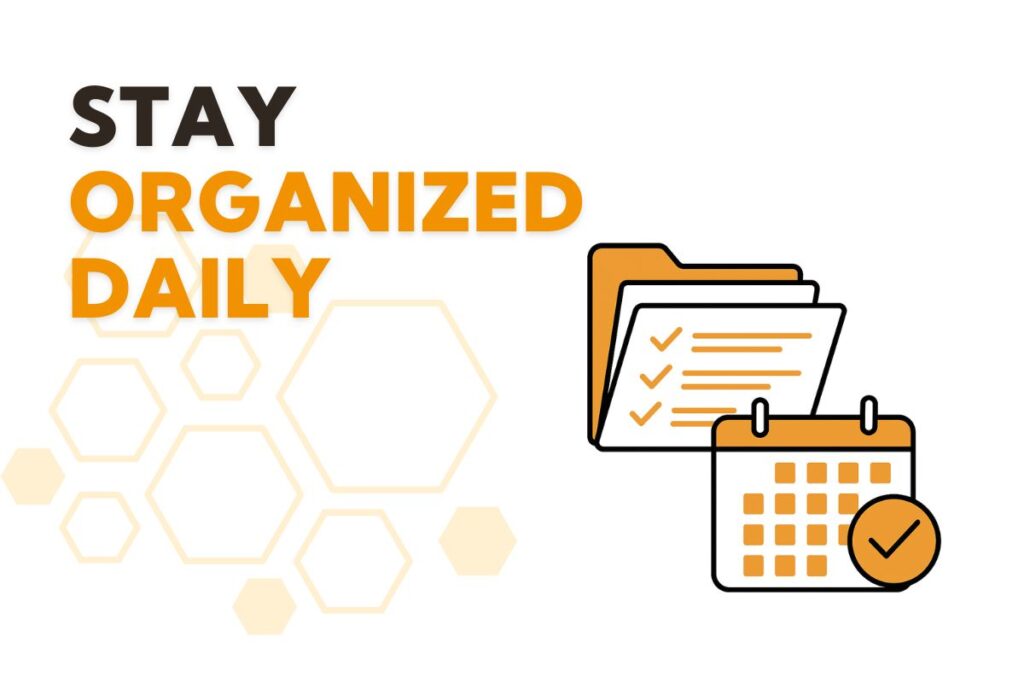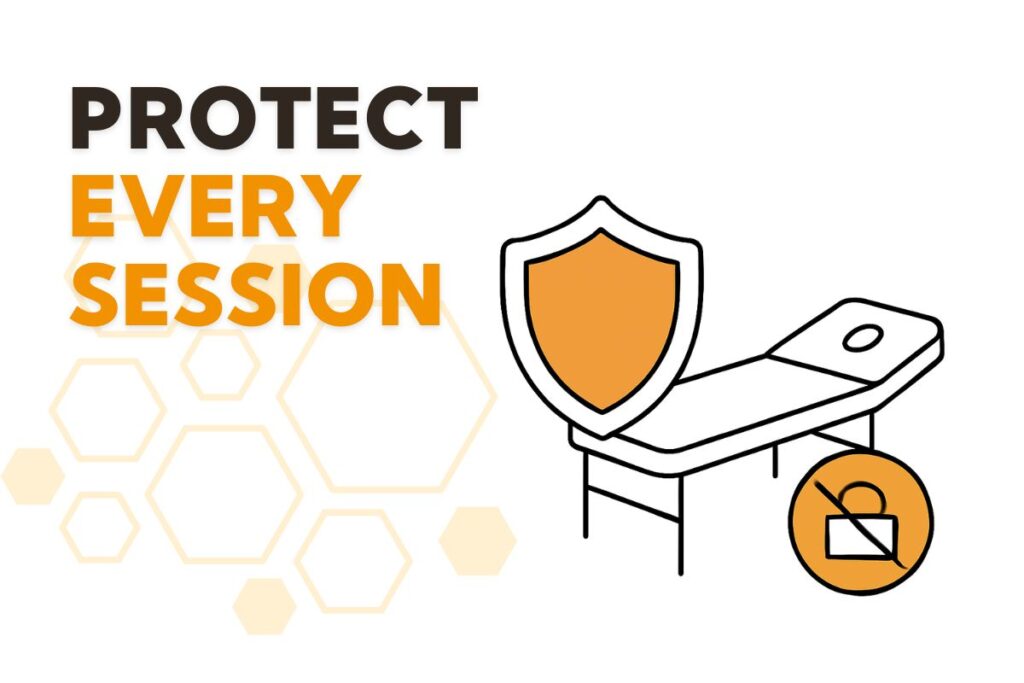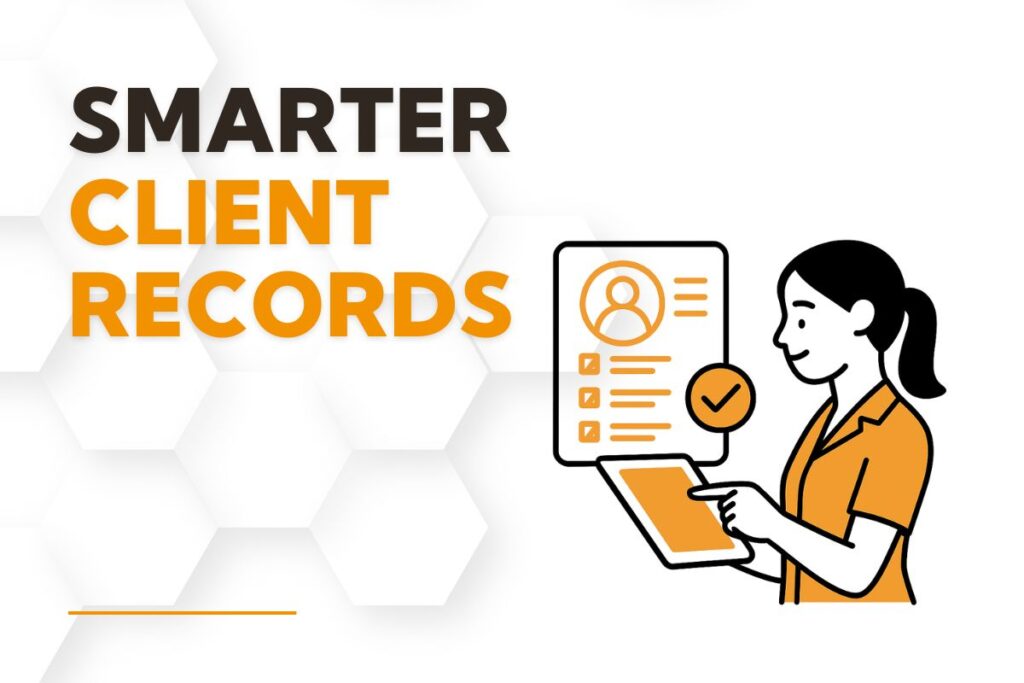A growing clinic shouldn’t mean growing stress
Massage therapy client records are often overlooked, but they are one of the most essential foundations of a successful and legally sound practice. As your massage therapy clinic grows, so does the paperwork. And while more clients might sound like good news, many clinic owners quickly discover that inconsistent or outdated client records become a silent barrier to smooth operations and exceptional service. When time is short and documentation is scattered, important health updates fall through the cracks, session notes go unfinished, and the overall client experience starts to suffer.
Keeping accurate, up-to-date massage therapy client records isn’t just a formality. It’s the foundation of client trust, legal protection, and consistent, high-quality care. In this article, we’ll unpack why this challenge is so common, what it costs your business, and how to transform your recordkeeping into a reliable system that supports both growth and peace of mind.
Why Most Massage Therapists Struggle With Client Records
The reality behind the paperwork problem
Despite the best intentions, it’s all too easy for massage therapists to fall behind on documentation. After all, you entered this profession to help people feel better, not to spend hours after closing time updating SOAP notes and client records.
Common challenges include:
- Relying on manual, paper-based systems that are slow and easy to lose
- Therapists using inconsistent documentation methods across the team
- Limited time between appointments to input detailed massage therapy customer records
- Misconceptions that only insurance-billing practices need thorough documentation
When massage therapy client records aren’t consistently updated, the impact ripples across every part of the client journey. Returning clients may feel forgotten, new health conditions can go unnoticed, and your clinic is left vulnerable to potential liability or compliance issues.
What It Means to Have Up-to-Date Massage Therapy Client Records
Going beyond the basics
Up-to-date massage therapy client records aren’t just files that exist. They are:
- Timely: Documented immediately or shortly after each session
- Complete: Including updated health history, treatment goals, session feedback, pressure preferences, and contraindications
- Consistent: All therapists follow the same templates and recording standards
- Secure: Stored digitally with appropriate access and privacy protocols
Massage therapy client records typically include:
- Client intake forms
- SOAP notes after each session
- Signed consent and release forms
- Progress notes for treatment plans
For reference, AMTA guidelines recommend therapists retain massage therapy client records for at least seven years, ensuring ongoing access and protection.

How Poor Recordkeeping Can Affect Client Experience and Business Health
Why outdated records cost more than time
When massage therapy client records are neglected, the impact goes far beyond a clerical inconvenience. It can compromise the very heart of your business: the client relationship.
Treatment inconsistency
Clients expect their therapist to remember key preferences and needs. If these aren’t documented and passed on correctly through updated massage therapy client records, sessions can become generic or even unsafe.
Legal and ethical risks
Failing to document treatment plans or ignoring updated medical issues can leave your practice open to legal claims, especially if a client experiences injury or dissatisfaction.
Missed business opportunities
Detailed massage therapy client records can help identify client progress over time, making it easier to upsell packages, personalize services, or adjust care plans—none of which is possible with missing or outdated notes.
A Real-World Example: One Missed Note, One Lost Client
At a busy clinic in Edmonton, a long-time client filed a formal complaint after their chronic neck condition was aggravated during treatment. The issue had been clearly mentioned during the initial intake, but the detail never made it into the therapist’s session notes. Without access to complete and accurate records, the therapist unintentionally caused discomfort that led to a breakdown in trust. The clinic had to scramble to compile documentation, respond to the client’s concerns, and deal with the reputational fallout. The client never returned.
In response, the clinic adopted a digital records system that required therapists to complete and review SOAP notes before any future appointments could be booked. Within a few short months, they experienced smoother communication between team members, more consistent client feedback, and a noticeable reduction in administrative strain. Simply keeping massage therapy client records up to date became a turning point in improving both client care and operational flow.
How to Keep Massage Therapy Records Up-to-Date Every Day
Step-by-step improvements you can start now
Haphazard note-taking and scattered files don’t scale with your business. Here’s how to create a reliable, streamlined process for massage therapy client records:
Step 1: Create standardized documentation templates
Design intake and SOAP note templates that every therapist in your clinic uses. Include key prompts like areas treated, pressure used, client feedback, and therapist recommendations.
Step 2: Require same-day session note updates
Make it policy to complete SOAP notes immediately after each session—or before the next one begins. Build in 5-minute buffers if needed.
Step 3: Use a secure, cloud-based system
Move away from paper and adopt a HIPAA-compliant digital recordkeeping platform. Cloud storage ensures data access across devices, automatic backups, and better organization of massage therapy client records.
Step 4: Allow mobile or in-room documentation
Empower therapists to use tablets during or right after sessions for real-time updates. This removes friction and minimizes forgotten details in massage therapy client records.
Step 5: Train your staff and monitor compliance
Host a short training on recordkeeping standards and review a few sample notes weekly to provide feedback. Recognize compliance and gently correct inconsistencies.
Step 6: Review and purge annually
Archive or securely dispose of massage therapy client records past the required retention period, ensuring your database remains clean, current, and legally sound.

What Happens When Recordkeeping Becomes a Strength
Imagine your clinic with seamless documentation
Shifting to consistent, up-to-date massage therapy client records doesn’t just fix a problem. It unlocks a better experience for everyone involved.
Therapists feel supported and confident
When notes are clear and accessible, therapists are empowered to deliver tailored care—even to returning clients they haven’t seen in months.
Clients feel remembered and valued
Details like their preferred music, pressure preferences, and ongoing injuries aren’t forgotten—because they’re part of reliable massage therapy client records.
Admin becomes easier, not heavier
With clear templates and cloud storage, admin work shrinks. No more file cabinets, lost forms, or endless data entry sessions.
Your practice is protected and prepared
Accurate massage therapy client records make audits, client inquiries, and business expansion easier and more secure.
When You’re Too Busy to Keep Up: What To Do
Make the tools work for your workflow
If you’re feeling overwhelmed, the solution isn’t to “try harder.” It’s to improve your tools and systems. Look for features like:
- Automated reminders for unfinished SOAP notes
- Integrated intake forms linked to client profiles
- Customizable fields to match your treatment style
Hivemanager offers digital solutions designed specifically for massage clinics, allowing you to create and manage massage therapy client records with ease. Learn more about streamlining client intake processes with digital forms or explore how electronic charting SOAP notes enhance session documentation.
Let Documentation Empower, Not Exhaust
Staying on top of your massage therapy client records doesn’t have to feel like an endless chore. With the right systems and a team committed to consistency, recordkeeping becomes a seamless part of your client care—not a burden that follows you home.
The key is starting small. Standardize your notes, carve out time after sessions, and invest in tools that simplify your work, not complicate it. The result? Better care, happier clients, and a practice ready for long-term success.
Frequently Asked Questions
Best practice is at least seven years after the client’s last session, though local regulations may vary. Always check your region’s laws to ensure compliance.
While paper is acceptable, it’s less secure, harder to organize, and more prone to loss. Digital systems provide better access, compliance, and backup options.
If you electronically bill insurance or store client health information, HIPAA may apply. Even if not legally required, following HIPAA-like practices protects your clients and your business.
SOAP stands for Subjective (client-reported issues), Objective (your findings), Assessment (professional evaluation), and Plan (treatment steps). These notes should be updated every session for clarity and continuity.


